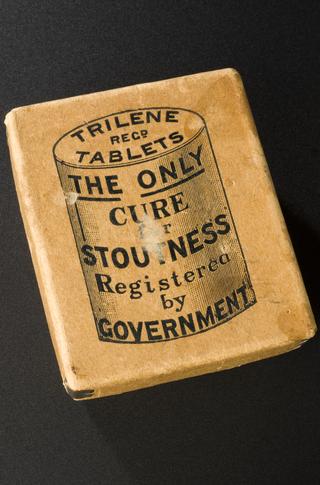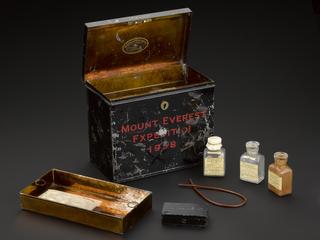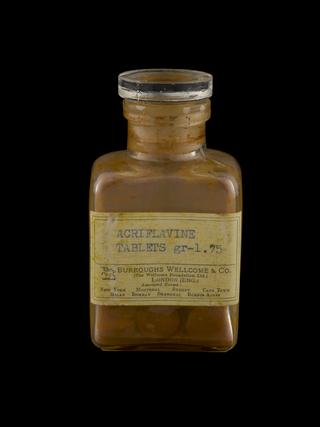




Glass specimen jar, containing panicled acacia (accacia letheophlaea) pods from India, 1840-1920
The bark of the plant panicled acacia (shown on the far left) is used in Indian medical traditions to treat skin complaints. It also treats leprosy, fevers, vomiting, diarrhoea and dysentery. The pods or fruit of the plant are used for food. The specimen is shown here with other plants used in herbal medicine, cajanus bicolor seeds (A669371) and Tanner’s cassia seed pods (A669388).
Details
- Category:
- Materia Medica & Pharmacology
- Collection:
- Sir Henry Wellcome's Museum Collection
- Object Number:
- A669220
- Materials:
- glass, clear and lid, paper
- Measurements:
-
overall: 205 mm 67 mm, .24 kg
- type:
- sample

